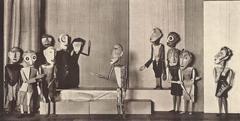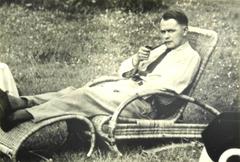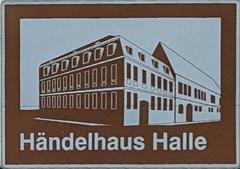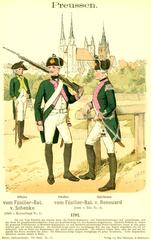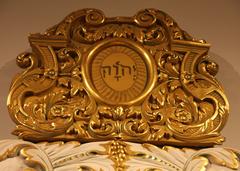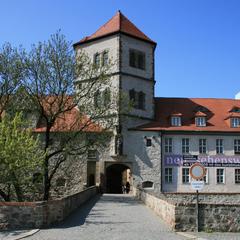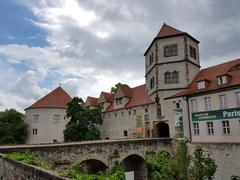Malzfabrik Reinicke & Co. in Halle, Germany: Visiting Hours, Tickets, and History
Date: 14/06/2025
Introduction
The Malzfabrik Reinicke & Co. in Halle (Saale), Germany, is a remarkable example of 19th-century industrial architecture and urban transformation. Once a key site in the city’s brewing industry, this former malt factory is now celebrated not only for its striking Neo-Renaissance brickwork and monumental scale but also as a model of adaptive reuse and sustainable urban renewal. Its journey from bustling factory to residential and cultural landmark encapsulates Halle’s evolution from an industrial powerhouse to a vibrant modern city (Ahola-Halle; halle-im-bild.de; Wikipedia; nickoftime.de).
This guide provides a comprehensive overview of the Malzfabrik’s history, architectural features, cultural significance, and practical visitor information—including opening hours, ticketing, accessibility, and tips for planning your visit. Whether you are a history enthusiast, architecture lover, or curious traveler, the Malzfabrik offers a unique lens into Halle’s rich industrial legacy and its dynamic present.
Table of Contents
- Historical Context
- Architectural Features
- Adaptive Reuse & Modern Living
- Cultural and Urban Significance
- Visitor Information
- Nearby Attractions
- Visitor Tips
- FAQ
- Visuals and Media
- References and Further Reading
Historical Context
Founded in 1881, the Malzfabrik Reinicke & Co. emerged during a period of rapid industrial growth in Halle, leveraging the city’s favorable location on major railway routes and its proximity to the Saale River. The factory quickly became a major producer of malt, supporting Halle’s thriving brewing sector and contributing to the city’s growing reputation as an industrial hub (halle-touristinformation.de).
The site’s robust brick architecture, expansive production halls, and iconic silos are emblematic of the era’s engineering and design. The factory adapted to changing economic and political landscapes throughout the 20th century, enduring both world wars and the era of the German Democratic Republic. After reunification, the Malzfabrik—like many industrial sites—faced vacancy and decline, but ultimately became a focus for preservation and renewal efforts (Ahola-Halle; Wikipedia).
Architectural Features
Monumental Brickwork & Neo-Renaissance Style
The Malzfabrik Reinicke & Co. is distinguished by its monumental 195-meter-long brick façade, pilasters, cornices, and arched window frames. Designed by architects Hanner and Hering, the complex features Neo-Renaissance elements—symmetrical arrangements, decorative masonry, and a director’s villa that echoes Renaissance grandeur (Ahola-Halle; Komoot; halle-im-bild.de).
A unique detail is the battlement-style ventilation chimneys, lending the site a castle-like silhouette that dominates the local skyline. Interior spaces originally housed heavy malting machinery, necessitating robust structural solutions—thick walls, high ceilings, and open spans, many of which are preserved in today’s residential conversion (marodes.de).
Adaptive Reuse & Modern Interventions
Beginning in the early 2000s, the factory underwent extensive restoration and redevelopment. Historic details were meticulously preserved while integrating contemporary amenities. The complex now features light courts, loggias, and modern infrastructure, all designed to harmonize with the original architecture and enhance residential quality (Ahola-Halle; alte-malzfabrik-halle.de).
Adaptive Reuse & Modern Living
Since 2012, the Malzfabrik’s main structures have been converted into 73 unique loft-style apartments, blending industrial character with modern comfort. These residences offer high ceilings, large windows, and exposed brickwork, supporting a vibrant community atmosphere with shared green spaces and panoramic city views (alte-malzfabrik-halle.de; Wikipedia).
The site also includes leisure and wellness facilities: a 24-hour fitness center, planned sauna, indoor playground, café, and beer garden. The robust industrial construction allows for additional uses, such as event venues, dance clubs, and night events (nickoftime.de).
Cultural and Urban Significance
The Malzfabrik Reinicke & Co. stands as a protected cultural monument (registry number 094 11603), representing both Halle’s industrial legacy and its commitment to sustainable urban renewal (Wikipedia). Its adaptive reuse is a benchmark for heritage preservation, balancing modern needs with respect for the past.
Today, the Malzfabrik is a popular subject for guided tours, architectural walks, and heritage events. It anchors a neighborhood that blends historic industrial identity with contemporary urban life, and its silhouette remains a distinctive hallmark of the southern Halle cityscape (halle-im-bild.de; Komoot).
Visitor Information
Access and Location
- Address: Near the former Thüringer Güterbahnhof, coordinates 51°28′04.1″N, 11°59′13″E (Wikipedia)
- Public Transport: Bus lines 10, 14; Tram lines 2, 4; easy walking and cycling access (komoot.com)
Visiting Hours
- General access: The exterior and surrounding public areas are open year-round from dawn to dusk.
- Interior access: As most of the site is now residential, interiors are not generally open to the public except during special events or organized tours.
Tickets and Tours
- Exterior viewing: Free and open to the public.
- Guided tours: Offered seasonally during local heritage events or by arrangement with local organizations. Check alte-malzfabrik-halle.de or halle-touristinformation.de for announcements and booking.
- Special events: During festivals or cultural days, parts of the interiors may be accessible (advance booking recommended).
Accessibility
- Paved paths and public spaces are wheelchair and stroller accessible.
- Some upper floors or historic interiors may not be accessible except during special events.
- Assistance dogs welcome.
Facilities
- Fitness center (24/7)
- Planned sauna and children’s play area
- Café and beer garden (check for opening status)
- Nearby parking (limited); public transport recommended
Nearby Attractions
- Sculpture park at the former Thuringia freight station
- St. Johannes Kirche
- Rabeninsel nature reserve
- Joliot-Curie-Platz
- Historic Böllberger Mühle
These sites can be combined for a day exploring Halle’s industrial, cultural, and natural heritage (komoot.com).
Visitor Tips
- Photography: Early morning and late afternoon offer the best light for capturing the brickwork and silhouette.
- Respect privacy: As the site is largely residential, remain in public areas unless on a guided tour.
- Combine your visit: Explore the sculpture park and adjacent green spaces for a fuller experience.
- Check for events: Guided tours and access to interiors occur during heritage days or local festivals—plan ahead.
FAQ
Q: Are there set visiting hours?
A: No official hours for the exterior; public areas are accessible any time.
Q: Is there an entrance fee?
A: No fee for exterior viewing; guided tours or special interior events may require tickets.
Q: Is the site accessible for people with disabilities?
A: Outdoor paths are accessible; interior access may be limited outside of organized tours.
Q: Are guided tours available?
A: Yes, during special events or by prior arrangement. Check official resources for details.
Q: What else can I see nearby?
A: Sculpture park, St. Johannes Kirche, Rabeninsel, and more.
Visuals and Media
High-quality photographs and virtual tours are available via alte-malzfabrik-halle.de and komoot.com. These resources feature the Malzfabrik’s iconic brickwork, battlement chimneys, and adaptive residential spaces, with descriptive alt tags for accessibility.
References and Further Reading
- Ahola-Halle – Projekte Malzfabrik Umbau Sanierung Industriedenkmal Hallesaale
- Wikipedia – Malzfabrik Reinicke & Co.
- Halle im Bild – Fotos Industrie Malzfabrik Reinicke & Co.
- Nick of Time – Hallesche Malzfabrik Reinicke & Co.
- Komoot – Malzfabrik Reinicke Highlight
- Alte Malzfabrik Halle
- Halle Tourist Information – Malzfabrik Reinicke & Co.
Plan Your Visit
The Malzfabrik Reinicke & Co. is a living symbol of Halle’s industrial transformation, where history, architecture, and community converge. Whether you are exploring its monumental exterior, joining a guided heritage walk, or attending a cultural event, your visit will connect you to the city’s storied past and its ongoing urban renewal.
For the latest updates, event information, and tour bookings, consult the official websites and download the Audiala app for an enhanced experience. Respect the privacy of residents, enjoy the surrounding green spaces, and immerse yourself in Halle’s dynamic cultural landscape.
